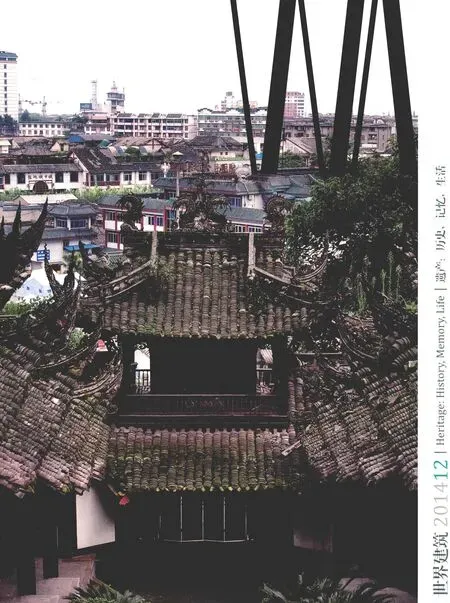上甘棠村古建筑群保护规划,江永,湖南,中国
项目设计:汤羽扬/北京建工建筑设计研究院/北京建筑工程学院建筑与城市规划学院
上甘棠村古建筑群保护规划,江永,湖南,中国
项目设计:汤羽扬/北京建工建筑设计研究院/北京建筑工程学院建筑与城市规划学院
上甘棠村古建筑群为2006年国务院公布的第六批全国重点文物保护单位,同时也是2007年建设部、国家文物局公布的第三批中国历史文化名村。古村位于山水环抱的湘南地区,自唐太和二年(827)周姓族人迁入至今已有千余年的历史。难能可贵的是这处“千年古村”至今保存完整,现有步瀛桥、文昌阁、忠厚祠、寿萱亭、门坊、家堂、码头、古驿道等古建筑,以及多达200余栋的古民居,特别是24方摩崖石刻,记述了宋、元、明、清以来村庄发展和地方文化精神。
保护规划从现场调查研究入手,对古村落建筑群的现状以及周边环境进行了详细的调查,对每处古建筑进行了评价。
保护规划考虑了古村落的情况既完整地保存了传统形式,同时还在延续现代使用功能,立足文化遗产保护的整体保护概念,结合文物保护规划与历史文化街区保护规划的编制要求,对古村落的保护进行了全面思考。
目前,我国的文物保护规划与历史文化街区(含历史文化村镇)的保护规划具有较强的行业管理特征,其间的衔接不够完善。在保护区划、保护措施等方面的要求不尽相同,因此对于具有双重身份的保护对象(既是全国重点文物保护单位,又是国家历史文化村镇)在编制保护规划时,会面临许多需要综合考虑的问题。本规划力图突出文化遗产保护的概念,尽力廓清保护对象,注重对上甘棠村有关历史信息的保护,对文物建筑物、古街巷道路、传统公共空间作为文物保护对象进行了认定。将古村落肌理、选址环境作为历史环境给予了高度关注,并通过对选址的分析,确定了保护区划,同时对新村的选点建设提出了相关要求,期望达到完整保存历史信息目的。
与此同时,对提高村民生活质量也提出了相应的措施,如人畜分离、消防安全等。
The ancient architectural complex in Shanggantang Village is listed in the sixth batch of the important heritage sites under state protection by the State Council in 2006, and also in the third batch of famous historic and cultural villages of China by the Ministry of Construction and the State Administration of Cultural Heritage in 2007. The ancient village, located at southern Hunan area with mountains and rivers encircled, can be dated back to thousand years since the immigrants surnamed by Zhou removed here in the second year of the Taihe reign period in Tang Dynasty (827). It is rare that the "millennium village" is well preserved, and now has ancient architectures such as Buying Bridge, Wenchang Pavilion, Zhonghou Shrine, Shouxuan Pavilion, gate arch, family church, wharf, ancient post road, and more than 200 ancient dwellings. In particular, there are 24 cliff inscriptions, which record the village development and local culture spirits from the dynasties of Song, Yuan, Ming and Qing.
Detailed investigations on current conditions of the architectural complex of the ancient village and surrounding environment, and evaluation on each ancient building have conducted on the basis of field research during the formulation of this Conversation Plan.
Seeing that the village is well preserved in traditional form and continuous for its modern functions, a concept of integrated cultural heritage conservation in combination with the requirements to formulate conversation planning of cultural relics and historical and cultural blocks is proposed in the Conservation Plan after taking a full consideration of the preservation of the ancient village.
At present, the conservation plans of cultural heritage, and historic conservation area (including historical and cultural towns and villages) are characteristic of industrial management and deficient in coordination. The requirements of protection zoning and conservation measures are different and so comprehensive consideration should be made when planning conservation scheme of the object which is doubly identified, that is, it is an important heritage sites under state protection as well as a famous historic and cultural villages. In this Conservation Plan, highlight is turned onto the concept of cultural heritage preservation, trying to clarify the object to be preserved, and onto the preservation of historical information related to Shanggantang Village. In addition, identification has made to the heritage buildings, ancient streets, roads and lanes, and traditional public spaces as preservation objects. Furthermore, high attention has given to the texture of and the environment for site selection of the ancient village and the preservation zoning is determined via analysis of site selection. Meanwhile, requirements over the construction of new village site are raised, expecting to achieve complete preservation of historical information.
Corresponding measures for improving the life quality of the villagers, such as separating the animals from humans, fire safety are also proposed at the same time.
项目信息/Credits and Data
委托单位/Client:湖南省江永县文化局/Hunan Provincial Yongjiang County Bureau of Culture
项目负责/Project Manager:汤羽扬/TANG Yuyang
设计团队/Project Team:韩真元,张亳,郜华,刘磊,
王勇,吴琼/HAN Zhenyuan, ZHANG Hao, GAO Hua, LIU Lei, WANG Yong, WU Qiong
项目时间/Project Period:2007-2008
评论
刘伯英:我国的文物保护规划与历史文化名村的保护规划具有较强的行业管理特征,我理解上甘棠村古建筑群保护规划是侧重文物保护规划的,更多地关注文物本体与周边环境等物质的要素;由于是古建筑群,所以又呈现出历史文化名村保护规划的特征,但对人和人的活动(民俗)等非物质的要素并没有过多涉及。
对于还在使用中的“活的遗产”,保护更加复杂。比如市政管线的铺设与建筑、街巷的关系,提高生活品质或者功能提升对建筑的改造,甚至经营需要的招牌对文物建筑和环境都会产生影响。保护必须是持续性的,对村民的教育和科学的管理可能更重要。
魏浩波:古建筑群村落保护在当代意识下更倾向于综合遗产概念,非物质文化遗产或文化景观等无形环境已成为重要的保护条目,保护对象已经扩展到环境中的建筑、社会结构、习惯以及与之相应的景观,换言之即次文化圈层的系统保护。上甘棠村古建筑群保护就此尝试了:(1)古建筑的年代分野与形制特征正本清源,建立了适合国内现实制度下的有效的梯次保护结构;(2)通过对影响聚落成群的山水格局关系、路径体系的整理与公共空间的梳理,试图通过稳定物化的聚落生成肌理固定传统社会结构投射下的物质空间关系;(3)透过对传统立面原型的重拾,并将之更新为村落形态发展的基本控制标准等等多样化的技术手段;如若有缘更多关注社会模型+体系景观的动态性稳固,当有范式意义。
Comments
LIU Boying: In the first placed, the planning for cultural relic and historic village protection in China has a strong "industrial management" feature. As far as I can see, the ancient buildings protection in Shanggantang Village belongs to the category of cultural relic planning, and therefore concerns more about physical elements such as cultural relics per se and their surrounding environment. But as they are also ancient buildings, the protection entails a feature of historic village planning, and it does not emphasize those non-physical elements such as human and human activities (e.g., folk customs).
For those "living heritage" in use, protection should be diversified and tailored. For instance, municipal pipelines should be deployed in specific relation to architecture and lanes; the improvement of living quality and building function could facilitate the transformation of architecture; even certain demanded commercial brands could have an impact on both heritage buildings and the environment. It is also important to note that, while protection must be sustained, education and scientific management, which are even more important, could not be neglected.
WEI Haobo: In contemporary sense, ancient buildings fall under the category of comprehensive heritage. Intangible environments including non-physical cultural heritage and cultural landscape have become important items for protection. Protection objects also expand to include buildings, social structure, customs and their relevant landscape within that environment, or what might be called the system of cultural sphere. In this regard, the Ancient Buildings Protection in Shanggantang Village has taken the following specific measures: (1) To sort out ancient buildings based on their built time and mode characteristics, a hierarchic protection structure is set up in line with current domestic systems. (2) By sorting out the mountain-water pattern, route system and public space that influence the formation of settlement, it tries to stabilize the materialized texture that generates settlements, so as to fix the physical spatial relation under the traditional social structure. (3) The traditional facade prototype is re-utilized and renewed into a basic criterion, among a diversity of other technical approaches, that functions to regulate the villages' morphological development. The scheme has the potential to serve as a paradigm provided it attends to the dynamic stability of social models and system landscape.
Conservation Planning of the Ancient Architectural Complex at Shanggantang Village, Jiangyong, Hunan, China, 2008
Project Design: TANG Yuyang/Beijing Jiangong Architectural Design and Research Institute/School of Architecture and Urban Planning, Beijing University of Civil Engineering and Architecture

